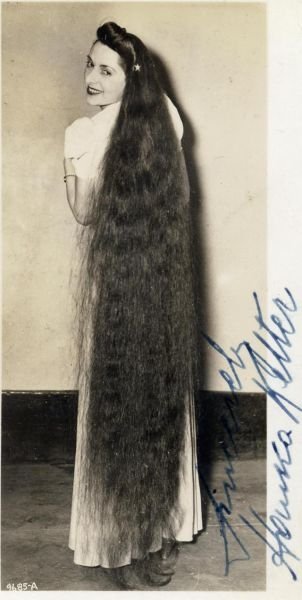|
|
Long Haired Girl
|
The thermoregulatory hypothesis (developed by Dr. Peter Wheeler, 1984, 1985) suggests that when human ancestors started living on the savanna, humans began sweating more to stay cool. It is posited that thick hair got in the way of the sweat evaporating, so humans evolved a sparser coat of fur. Although hair provides protection against harmful UV radiation, since our hominin ancestors were bipedal, only our heads were exposed to the noonday sun. Humans kept the hair on our head which reflects harmful UV rays, but our body hair was reduced. Opponents of the thermoregulatory hypothesis would say that losing hair added an extreme weakness to cold, but, seeing as how humans figured out cutlery around 2.6 million years ago, our ancestors easily could have found clothing within the 1.4 million years between cutting up their kills and losing their hair.
The aquatic ape hypothesis posits that sparsity of hair is an adaptation to a semi-aquatic environment, but the theory has yet to gain support among scientists.
Another hypothesis for the thick body hair on humans proposes that Fisherian runaway sexual selection played a role (as well as in the selection of long head hair), as well as a much larger role of testosterone in men. Sexual selection is the only theory thus far that explains the sexual dimorphism seen in the hair patterns of men and women. On average, men have more body hair than women. Males have more terminal hair, especially on the face, chest, abdomen, and back, and females have more vellus hair, which is less visible. The halting of hair development at a juvenile stage, vellus hair, would also be consistent with the neoteny evident in humans, especially in females, and thus they could have occurred at the same time.
A final hypothesis is that human hair was reduced in response to ectoparasites. Getting rid of our hair might have reduced the risk of fleas, ticks, lice, and other biting insects.
|
|









